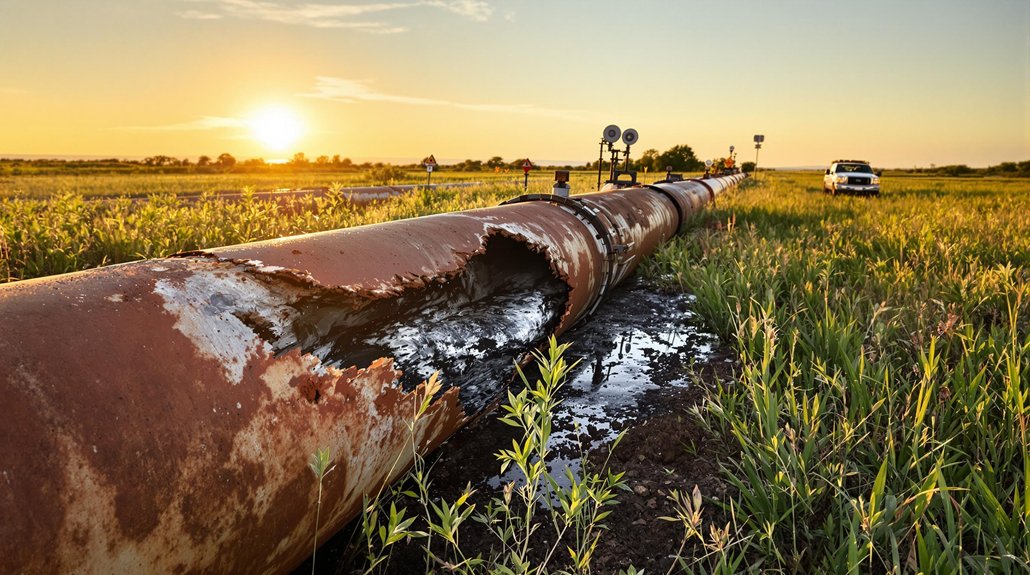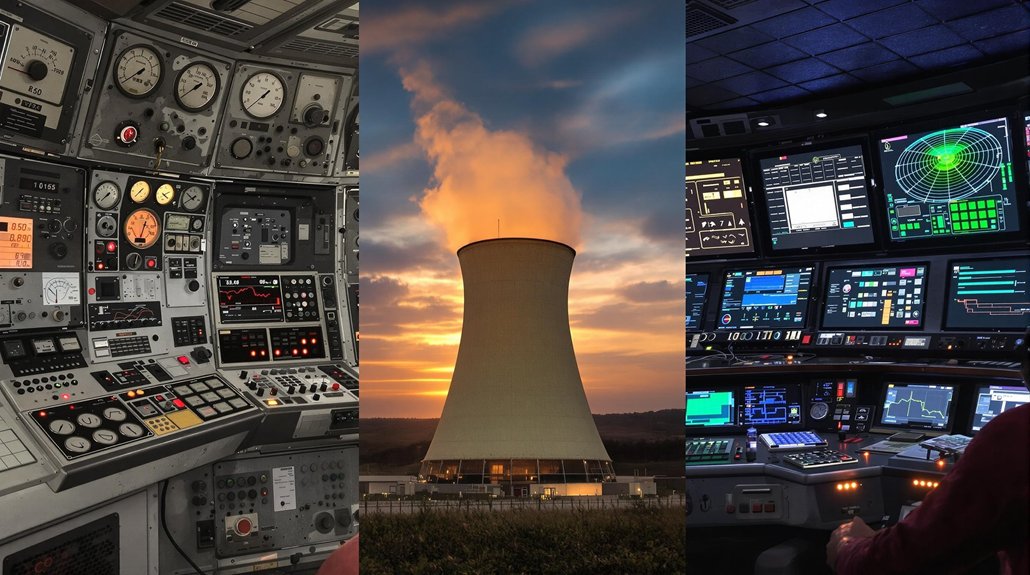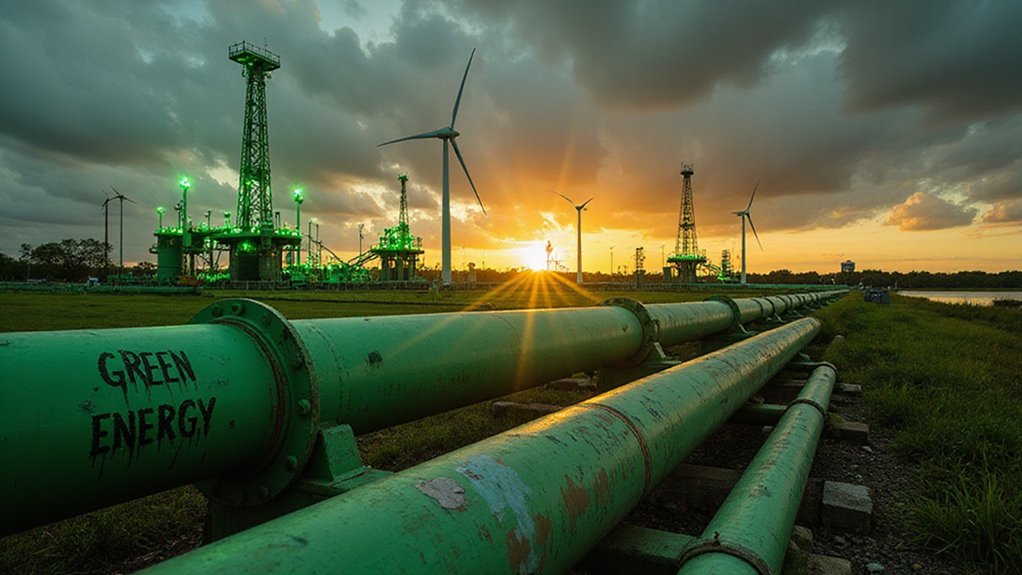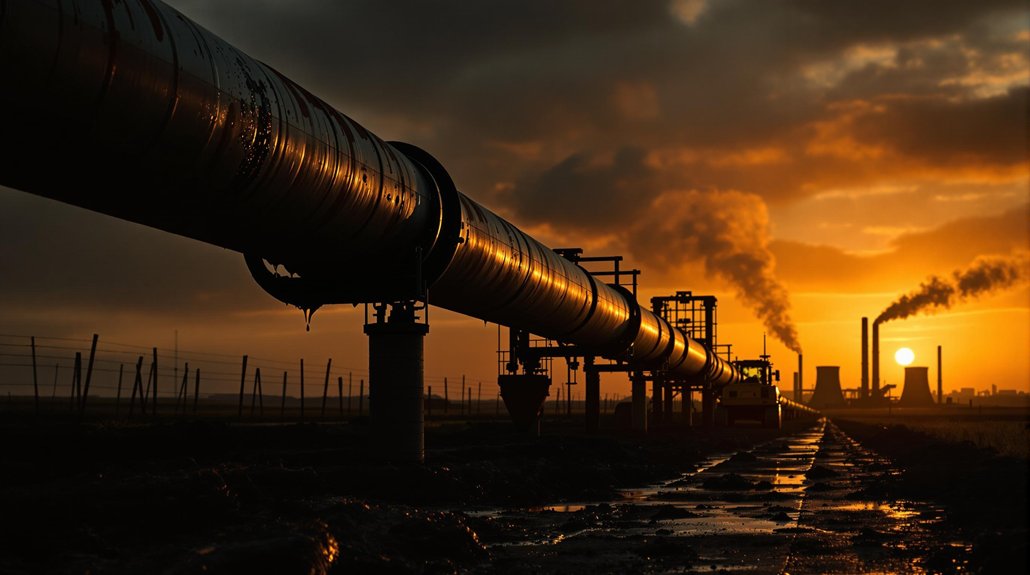While pipeline incidents have decreased by 13% since 2020, America’s energy infrastructure still faces serious safety challenges with over 1.7 incidents reported daily since 2010. The current year shows a slight improvement with 1.45 incidents per day, though data remains incomplete. Texas stands out as a particular concern, accounting for 37% of all reported incidents in 2024, markedly exceeding the national average per pipeline mile.
Pipeline safety trends show modest improvement, yet Texas remains an outsized contributor to daily incident statistics nationwide.
Recent years have seen several devastating accidents. In 2020, the Colonial Pipeline leaked 2 million gallons of gasoline in North Carolina. That same year in Satartia, Mississippi, a CO₂ and H₂S pipeline explosion sent 45 people to hospitals. More recently, the 2024 Justice Pipeline disaster forced 1,550 people to evacuate after 1.6 million gallons of LPG were released, causing $3.3 million in property damage. The daily occurrence of these incidents highlights the persistent and widespread nature of pipeline risks across the country.
Staffing reductions at federal oversight agencies during the Trump administration have hampered pipeline safety monitoring. With fewer inspectors, the time between safety checks has increased, raising the risk of undetected hazards. This oversight gap appears most pronounced in high-incident regions like Texas, where multiple explosions have been linked to equipment hits and operational failures. The Keystone Pipeline has been particularly problematic, with major leaks reported in Kansas, Texas, and North Dakota between 2022 and 2025.
While some safety metrics show improvement—corrosion failures decreased by 13% and weld/material failures dropped 60% since 2020—operations and maintenance issues continue to drive a considerable portion of incidents, though they’ve declined by 22%. Similar to how Earth has exceeded the 1.5°C warming threshold, these pipeline safety challenges represent critical infrastructure vulnerabilities requiring immediate attention.
Experts warn that official statistics likely understate the problem. PHMSA data collection has gaps, and local investigations often reveal higher injury and evacuation numbers than initially reported. The harmonization of federal and state reports consistently shows discrepancies in injury data.
Despite these concerns, there’s been a 33% decline over five years in integrity management-related incidents in areas impacting people and the environment. This suggests that targeted safety measures can be effective when properly implemented and monitored.
However, without adequate regulatory staffing and oversight, the full safety potential of America’s pipeline infrastructure remains unrealized.
References
- https://www.fractracker.org/2025/04/pipeline-incidents-are-a-daily-occurrence/
- https://en.wikipedia.org/wiki/List_of_pipeline_accidents_in_the_United_States_in_the_2020s
- https://liquidenergypipelines.org/documents/en-us/814dd0a9-0fb1-44da-8e2a-89cf55f4da81/1/
- https://www.phmsa.dot.gov/data-and-statistics/pipeline/pipeline-incident-20-year-trends
- https://www.bts.gov/content/hazardous-liquid-and-natural-gas-pipeline-safety-and-property-damage-data








